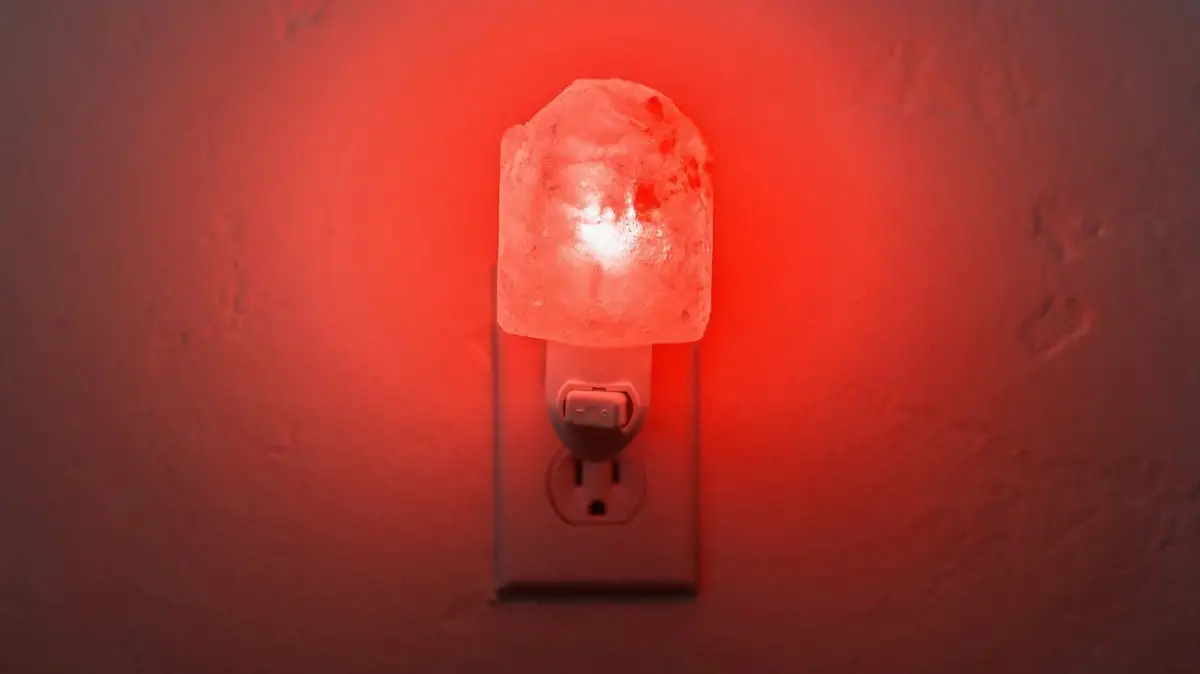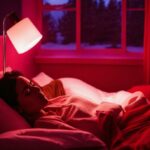Have you ever heard of red light therapy? It is a new type of therapy that has been gaining more attention in the last few years. It is said to help with a variety of ailments, from skin issues to depression. But does red light therapy make you sleepy? In this article, we will explore the potential effects of red light therapy on sleep and whether or not it can help you get a better night’s rest.

Contents
Does Red Light Therapy Help With Sleep?
Red light therapy has been proven to help improve sleep quality in some people. It is a natural, non-invasive form of light therapy that has been shown to reduce stress hormones and regulate the body’s circadian rhythm. Red light therapy can be used to treat insomnia, as well as help with overall sleep quality. It is thought to help the body relax and prepare for sleep.
Red light therapy involves exposing the skin to low levels of red light. It is believed that this light penetrates deeper into the skin than other forms of light, and it is thought to stimulate the production of certain hormones, such as serotonin and melatonin. These hormones are known to help regulate sleep cycles, as well as reduce stress.
There are many different ways to get red light therapy. It can be done in the comfort of your own home using a device specifically designed for this purpose, or it can be done in a professional setting with the help of a doctor or therapist. Some people find it beneficial to combine red light therapy with other sleep treatments, such as aromatherapy or meditation.
How Does Red Light Therapy Help with Sleep?
The primary way that red light therapy helps with sleep is by regulating the body’s circadian rhythm. The body’s circadian rhythm is an internal clock that helps to regulate when we fall asleep and wake up. When the body’s circadian rhythm is out of balance, it can lead to insomnia, fatigue, and other sleep issues. Red light therapy works by stimulating the production of certain hormones, such as melatonin, which helps to reset the body’s internal clock and can help to promote better sleep.
Red light therapy also helps to reduce stress hormones, such as cortisol. Cortisol is a hormone that can interfere with sleep if it is too high. By reducing stress hormones, red light therapy can help to improve sleep quality.
Are There Any Side Effects?
Red light therapy is generally considered safe and free of side effects. However, some people may experience some mild side effects, such as eye irritation or skin redness. It is important to follow the instructions of your doctor or therapist when using red light therapy, and to stop using the treatment if any side effects occur.
It is also important to note that red light therapy should not be used in place of other sleep treatments, such as medications or lifestyle changes. It is best to use red light therapy as an adjunct to other treatments, rather than as a replacement.
How to Use Red Light Therapy for Sleep?
If you decide to use red light therapy to help with sleep, it is important to follow the instructions of your doctor or therapist. They will be able to tell you the best way to use the therapy, as well as the best times and duration of exposure.
Most people use red light therapy for a short period of time each day. It is typically recommended to use the therapy for about 20 minutes at a time, for two to three times a week. It is important to note that the effects of red light therapy may take a few weeks to become noticeable.
Red Light Therapy Devices
There are many different types of red light therapy devices available on the market. It is important to research the different devices to find one that will best suit your needs.
Many red light therapy devices are designed for home use. These types of devices are typically small and easy to use. They are often equipped with adjustable settings, so you can customize the intensity of the light to best suit your needs.
Professional Settings
If you would prefer to use red light therapy in a professional setting, there are many doctors and therapists who offer the treatment. They will be able to provide guidance and advice on the best way to use the therapy, as well as the best times and duration of exposure.
It is important to note that red light therapy is not a replacement for other sleep treatments, such as medications or lifestyle changes. It is best to use red light therapy as an adjunct to other treatments, rather than as a replacement.
Related Faq
Q1. What is Red Light Therapy?
A1. Red light therapy is a type of phototherapy that uses low-intensity, visible red light to improve tissue healing and reduce inflammation. It works by stimulating the mitochondria in cells, which helps to increase the production of ATP (adenosine triphosphate), a molecule used for energy. Red light therapy has been used for many conditions, including skin conditions, joint pain, and sleep disorders.
Q2. Does Red Light Therapy Make You Sleepy?
A2. Red light therapy is not known to make you sleepy in and of itself, though it can be used to help treat sleep disorders. A study from 2018 found that red light therapy can help to improve sleep quality, reduce sleep latency, and reduce sleep disturbances in adults with insomnia. However, the effects of red light therapy on sleep are not yet fully understood and more research is needed.
Q3. What is the Mechanism of Action for Red Light Therapy?
A3. The mechanism of action for red light therapy is not fully understood, though it is believed to work through the stimulation of the mitochondria in cells. This stimulation leads to an increase in the production of ATP (adenosine triphosphate), a molecule used for energy. Additionally, red light therapy has been found to increase the production of endorphins, which are hormones that help to reduce pain and inflammation.
Q4. What are the Benefits of Red Light Therapy?
A4. Red light therapy has many potential benefits, including improved skin health, joint pain relief, and improved sleep quality. Additionally, red light therapy has been found to reduce inflammation, help heal wounds, and improve mental clarity. It is also thought to help stimulate hair growth, improve vision, and reduce the appearance of wrinkles and fine lines.
Q5. Is Red Light Therapy Safe?
A5. Yes, red light therapy is a safe and non-invasive treatment option. It is considered a very low risk procedure, with no known side effects. Red light therapy is also non-ablative, meaning it does not remove or damage the skin. However, it is important to speak to a doctor before beginning any new treatment, especially if you have any underlying health conditions.
Q6. How Long Does Red Light Therapy Take?
A6. The amount of time needed for red light therapy depends on the condition being treated and the intensity of the light. Generally, treatments can last anywhere from several minutes to an hour. Additionally, red light therapy is usually done two to three times a week, for a total of six to eight weeks. It is important to follow your doctor’s instructions and use the recommended intensity and duration of treatment.
Can Red Light Therapy Help You Sleep Better?
In conclusion, red light therapy has been found to be a safe and effective way to improve sleep quality and reduce fatigue. While more research is needed to assess the long-term effects of red light therapy, initial results have been promising. It is important to note that red light therapy should not be used as a substitute for traditional treatments for sleep disorders and other medical conditions. Ultimately, it is up to the individual to decide if red light therapy is a good fit for them.








